Environmental Science, Resources & Studies
An Interdisciplinary Approach to Studying the Environment
The interrelated degrees that compose the UAS Environmental Science, Resources & Studies are as interconnected as the environment itself. Spanning a range of subjects from physical science to human impacts to outdoor recreation, UAS environmental degrees are designed for the curious student dedicated to developing solutions to some of the world’s most challenging problems.
The UAS Environmental Science, Resources & Studies includes the B.S. in Environmental Science, the B.S. in Environmental Resources, and the B.A. in Environmental Studies (with an optional Outdoor Studies track). Select courses have lab and field components that take advantage of our proximity to ocean, glacier, mountain, and forest environments.
All UAS Environmental Science, Resources & Studies students start together, taking courses taught by faculty from both the sciences, social sciences, and humanities. This centralized program structure gives students a chance to explore environmental disciplines and find the right degree path for them — and to easily change that path should their interests evolve later in the program.
Environmental Science, Resources & Studies Degrees
Student Experience
Inside Environmental Science, Resources & Studies
Take a deeper look inside the Environmental Sciences, Resources, and Studies degrees that make up the UAS Environmental Science, Resources & Studies.

An Interdisciplinary Approach to Learning
Interdisciplinary programs at the University of Alaska Southeast combine a variety of disciplines for you to explore, to think across boundaries, and to chart your own course. Environmental Science, Resources & Studies blends classes in the sciences, humanities, Alaska Native languages, and outdoor skills; refer to the Academic Catalog for the list of courses included in each degree.
Studying Climate Change in Real Time
What if you found yourself here, at the University of Alaska Southeast? The nearby Juneau Icefield is a natural laboratory for these undergraduate environmental science students.
Living My Mountaineering Dream
Outdoor Studies graduate Emma Lyddan tested her guiding skills through a successful summit of Denali and a crossing of the Juneau Icefield. Within months of graduating, Emma started her career in Glacier Grey in Torres del Paine National Park, guiding in Patagonia!
Traversing the Taku Glacier
UAS Associate Professor of Geophysics Jason Amundson and students spent a few days traversing the Taku Glacier while maintaining weather instruments along the way. The glacier, just south of Juneau, has been a focus of study as it advances and excavates the land in its path. Follow along as the team collects data to help understand the phenomenal motion of the ice flowing into the fjord.
Alaska Native Languages and Society
The Environmental Science, Resources & Studies degrees include Alaska Native language and studies classes. UAS is at the heart of revitalization for three Alaska Native languages: Tlingit, Haida, and Tsimshian. The learning experience is dynamic and engaging through community activities and historical and linguistic research projects working with Elders and senior faculty.
Students learn about what makes up Alaska Native cultures and organizations — from historical migration patterns and contact with other cultures to modern day tribes, ANCSA corporations, consortia, and civil rights organizations.
For students of Alaska Native ancestry, this is a way to connect with the heritage language of their ancestors. For the non-Native learner, it is a way to connect to the land and people of Southeast Alaska.
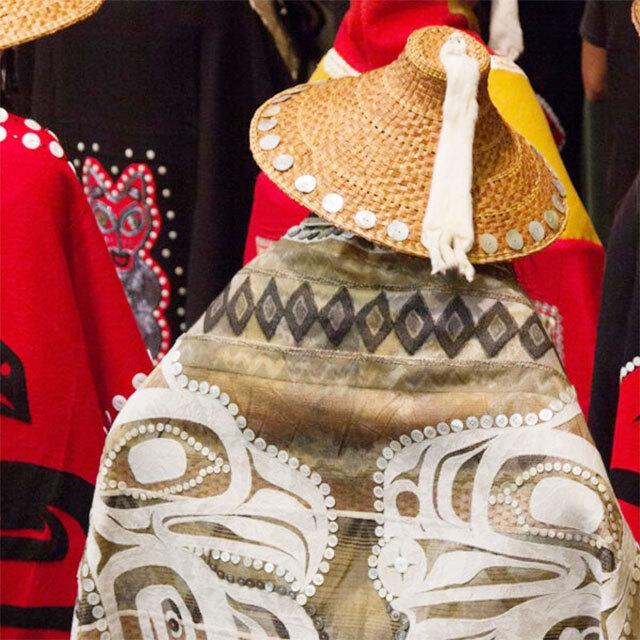
Outdoor Studies Students in Japan
Come along with the Outdoor Studies Capstone class while they explore backcountry skiing in Japan's Hakuba region.
Science of Sampling
UAS Associate Professor of Geology Sonia Nagorski researches the pollutant mercury, which is present in Southeast Alaska ecosystems. Undergraduate students assisted Professor Nagorski with the study, hiking along rivers and streams near the UAS campus.
Education for a Career and for Life
Our Outdoor Studies B.L.A., B.A., and certificate programs offer classes to develop students' skills and explore new ways to think about the human relationship to the outdoors.
Experience Alaska in a Whole New Way
You’re ready for something new. New challenges, new places, new adventures. In the classroom or in the natural world, adventure abounds at the University of Alaska Southeast. See Alaska in a whole new way. Explore the possibilities in our learning community, on campus and on-line.
Add Outdoor Studies to Your Environmental Degree
The B.A. in Environmental Studies with an Emphasis in Outdoor Studies adds skills-based courses in areas like mountaineering, backpacking, backcountry skiing, ice climbing, kayaking, and more. Academic courses explore concepts in sport, recreation, and leadership.
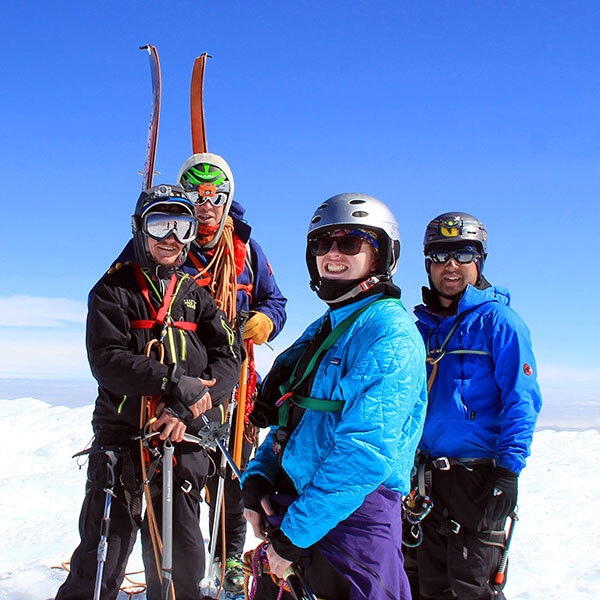
Wade in: The "Icefield to Estuary" Project
In the Icefield to Estuary Project, UAS Associate Professor of Geology Sonia Nagorski collects data to compare the amount of iron in glacial-fed rivers vs. wetland streams as part of the Experimental Program to Stimulate Competitive Research. Iron is an abundant and important ocean nutrient for organisms that make up our diverse Southeast Alaska ecosystem. The study provides a unique opportunity for undergraduates to engage in research in a variety of environments.
Learn and earn degree credits while kayaking in Alaska
Surround yourself in your chosen field of study. UAS offers kayak oceanography and ocean studies classes that provide students with an interdisciplinary experience as a team member of a kayaking expedition, immersing students in the extraordinary natural wilderness of Southeast Alaska.
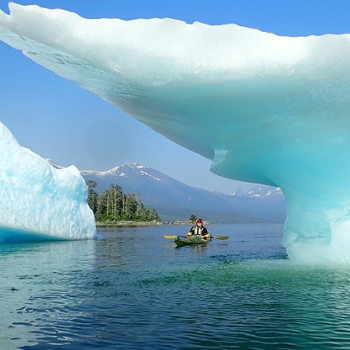
A Wilderness as Vast as Your Curiosity
UAS is absolutely unique; a public university surrounded by the largest national forest in the United States. As a Natural Sciences undergraduate at the University of Alaska Southeast, you’ll do research in the forest, on glaciers and along the coast.
Our Research Partner: The Alaska Coastal Rainforest Center
The ACRC provides interdisciplinary research and training opportunities for undergraduate, graduate, and postdoctoral scholars to learn and work in north Pacific coastal temperate rainforest ecosystems. UAS and the ACRC work together to provide our students and graduates with the experiences and relationships they need to start their scientific careers.
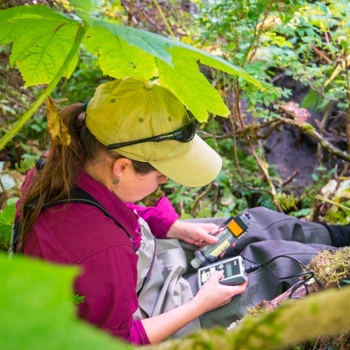
UAS Science Faculty and Alaska EPSCoR: Funding Research Projects
UAS science faculty actively work with EPSCoR, a nationwide research and education organization administered by the National Science Foundation. At UAS, students work directly with professors specializing in their fields; you’ll get the personal attention and research access needed to launch your science career.
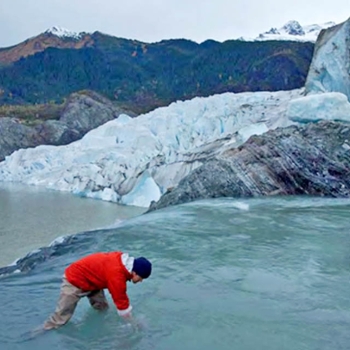
Learning Environments
Áakʼw Tá Hít Environmental Science Building
Áak’w Tá Hít (House at the Head of the Little Lake) Environmental Science building is located on the University of Alaska Southeast Juneau campus, within the heart of Alaska’s icefield, rainforest, mountain, wetland, and marine habitats.
Áak’w Tá Hít incorporates the classrooms, laboratories, and field research and SCUBA diving facilities necessary for scientists and students to address the complex environmental questions facing society.

The Juneau Icefield
A few miles from UAS, the Mendenhall, Eagle, Herbert, and Lemon Creek glaciers all provide gateways to the Juneau Icefield — the fifth largest in North America. At the forefront of climate change research, Environmental Science students are making mass balance measurements and studying the impacts of shrinking glaciers on nearby watersheds.
Current projects include examining glacial runoff in a changing climate, multi-decade surface change across the Malaspina Glacier, measuring metabolic rates of groundfish in habitats of differing glacial effluent, and more.
Students also have the opportunity to apply for the Juneau Icefield Research Program, an eight-week annual summer field research expedition that crosses the icefield from Alaska to British Columbia.
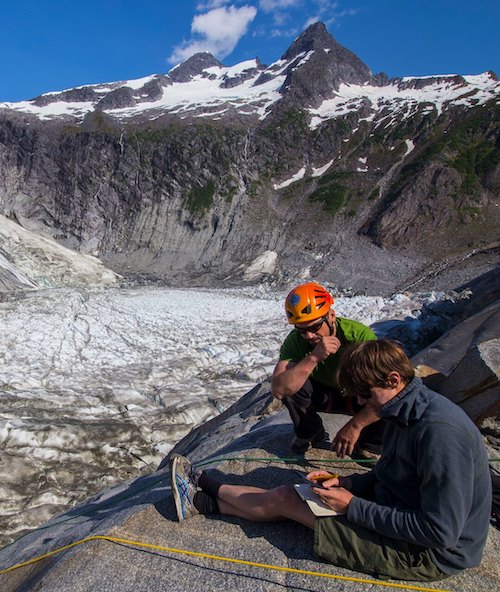
Spatial Ecosystem Analysis Lab
UAS hosts the Spatial Ecosystems Analysis Lab (SEALAB), a technical research and educational facility specializing in geospatial analysis. In addition to ecosystem analysis and modeling in Southeast Alaska's glacier-rainforest-coastal complex, SEALAB supports undergraduate students in research and training.
Projects include measuring climate induced shifts in salmon phenology, assessing the sensitivity of Alaska's coastal rainforest ecosystem to changes in glacial runoff, analysis of changes of treeline distribution and productivity, and establishing baseline data of brown bear distribution in rapidly deglaciating landscapes.
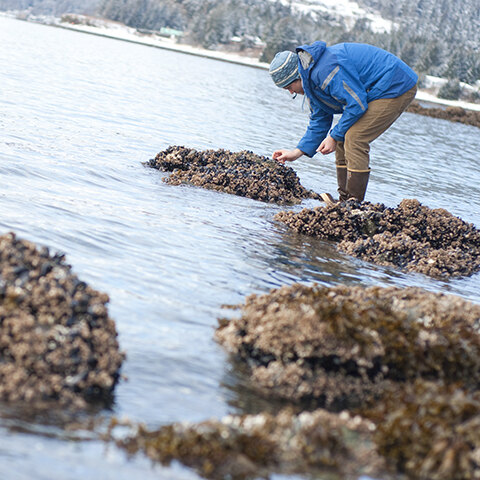
Alaska Coastal Rainforest Center
The Alaska Coastal Rainforest Center focuses on the Pacific coast temperate rainforest, stretching from Oregon to southcentral Alaska. Home to tens of thousands of people who depend on natural resources and tourism, this region is characterized by intricate geology, cultural history, and complex linkages across ecosystems.
The Center builds partnerships and catalyzes ecological, economic, and social research to support vibrant and resilient communities and ecosystems. Projects include ocean acidification monitoring, icefield to ocean ecosystem interactions along the Gulf of Alaska, carbon and nutrient cycling, stream discharge, snow cover, and soil moisture modeling, and yellow-cedar ecology.
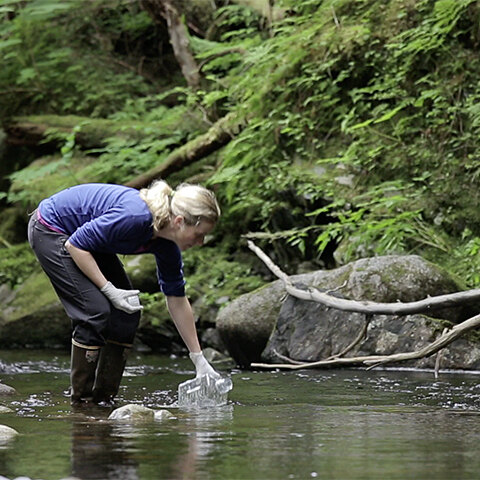
Eaglecrest Ski Area
Eaglecrest, Juneau's community ski area, offers 1,400 feet of vertical and 100-600 inches of snowfall per season. Terrain ranges from easy groomers to steep chutes, open bowls, and wooded glades.
In addition to recreation, faculty and students use Eaglecrest to study avalanche dynamics and have developed operational snowpack stability and avalanche forecasting models. The environmental science program maintains a research station at the summit, monitoring weather conditions and providing real-time information on snow conditions for skiers, boarders, and patrollers.
Outdoor studies students takes advantage of the easily accessible backcountry terrain for courses in backcountry skiing and snowboarding, avalanche I and II, and mountaineering.
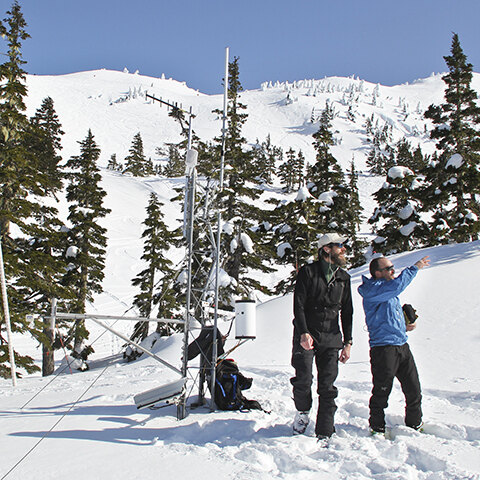
"Every semester I've been exposed to a new concept or idea that has fundamentally changed the way I see and interact with the environment around me."